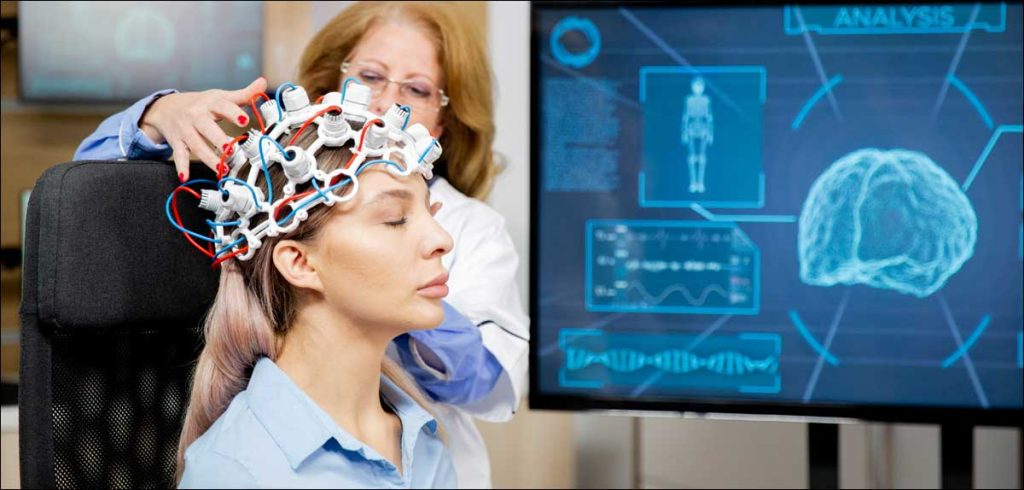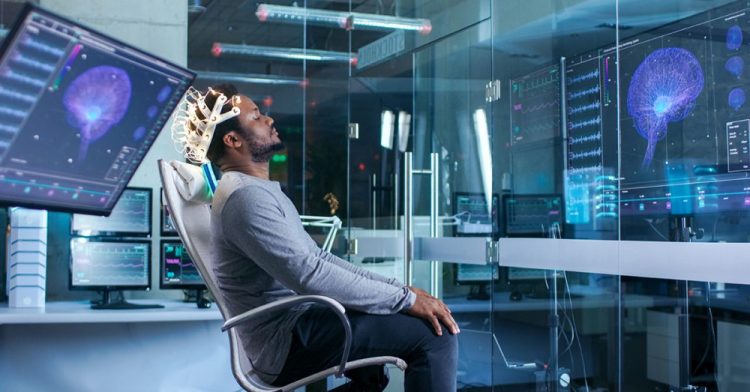Introduction
The advent of Brain-Computer Interface (BCI) technology has opened new frontiers in the way humans interact with machines. By enabling direct communication between the brain and external devices, BCIs have the potential to revolutionize numerous fields, including medicine, communication, entertainment, and even everyday tasks. With the ability to bypass traditional forms of communication, such as speech or physical gestures, BCI technology could lead to more efficient and intuitive human-machine interactions.
This article explores the various aspects of BCI technology, from its origins to its current state and future potential. It delves into how BCIs are reshaping industries, enhancing human capabilities, and solving complex problems. Additionally, the article addresses the ethical and societal challenges that accompany these groundbreaking advancements.
1. Understanding Brain-Computer Interface Technology
1.1 What is a Brain-Computer Interface (BCI)?
A Brain-Computer Interface is a direct communication pathway between the brain and external devices. BCIs work by reading electrical signals generated by the brain and translating them into commands that control machines, computers, or other devices. These interfaces bypass traditional input methods, such as keyboards, mice, or speech, and enable users to interact with technology using only their thoughts.
There are two primary types of BCIs:
- Invasive BCIs: These require surgery to implant electrodes directly into the brain. Invasive BCIs offer high levels of precision and are often used for medical purposes, such as helping individuals with severe disabilities regain motor functions or communicate.
- Non-invasive BCIs: These do not require surgery and instead use external sensors placed on the scalp to detect brain waves. While non-invasive BCIs are generally less precise than invasive ones, they are more accessible and safer for general use.
1.2 The Science Behind BCIs
The technology behind BCIs is rooted in the brain’s electrical activity. Neurons in the brain communicate through electrical impulses, and these signals can be detected by electrodes placed on the scalp (in the case of non-invasive BCIs) or within the brain itself (in the case of invasive BCIs). When a person thinks about performing an action—such as moving a limb, speaking, or even imagining a specific thought—distinct patterns of brain activity are generated.
The BCI system captures these patterns and processes them using algorithms and machine learning techniques to convert them into commands that can be understood by external devices. This real-time processing enables users to control everything from prosthetics and robotic arms to computers and even video games, simply by thinking.
2. Applications of Brain-Computer Interface Technology
2.1 Revolutionizing Medicine: Restoring Lost Functions
One of the most promising applications of BCI technology lies in the medical field, where it holds the potential to restore lost functions for individuals with physical disabilities. BCIs can enable patients with spinal cord injuries, neurological disorders, or amputations to regain control over their bodies or communicate in ways previously thought impossible.
- Restoring Mobility with Prosthetics: BCIs are already being used to control prosthetic limbs, allowing users to perform fine motor tasks, such as writing or holding objects. The brain signals are transmitted to the prosthetic, mimicking the natural movement of a real limb.
- Neuroprosthetics and Spinal Cord Injuries: Individuals with spinal cord injuries often lose the ability to move or feel below the site of injury. By using BCIs, researchers have been able to bypass the damaged spinal cord and send signals directly from the brain to muscles, enabling limited movement or even the restoration of sensation in some cases.
- Communication for the Paralyzed: For individuals suffering from conditions such as ALS (Amyotrophic Lateral Sclerosis) or severe strokes, BCI technology has enabled communication through thought alone. With the help of BCIs, patients can control computer cursors or even “speak” using text-to-speech systems, significantly improving their quality of life.
2.2 Enhancing Human-Machine Interaction in Everyday Life
While BCI technology is transforming healthcare, its applications in everyday life are equally exciting. As the technology advances, BCIs could become part of daily routines, allowing people to control devices and interact with the digital world using only their thoughts.
- Smart Homes and IoT: BCIs could enable users to control smart home devices such as lights, thermostats, or security systems through thought alone. With seamless integration into the Internet of Things (IoT), people could interact with their homes more efficiently, without the need for physical gestures or voice commands.
- Virtual and Augmented Reality (VR/AR): BCIs could provide a more immersive experience in virtual and augmented reality environments. Rather than relying on controllers or gestures, users could control avatars, objects, or entire virtual worlds simply by thinking. This could revolutionize entertainment, gaming, and training simulations by providing more natural and intuitive interfaces.
- Enhanced Human-Computer Interaction: With BCIs, people could interact with computers and smartphones without needing keyboards, touchscreens, or mice. This would allow for hands-free computing, faster communication, and more efficient operations. In work environments, this could increase productivity and reduce the physical strain associated with traditional input devices.
2.3 Advancing Scientific Research and Neuroscience
BCIs have significant potential in scientific research, particularly in the study of the brain and neuroscience. By using BCIs to monitor and decode brain activity, researchers can gain deeper insights into brain functions, cognition, and neural disorders.
- Brain Mapping: BCIs allow scientists to monitor brain activity in real-time, providing valuable data for understanding how different areas of the brain control motor functions, emotions, and thoughts. This information is vital for developing treatments for neurological diseases such as Parkinson’s, Alzheimer’s, and epilepsy.
- Neurofeedback and Cognitive Enhancement: BCIs can also be used for neurofeedback, a process that trains individuals to regulate their own brain activity. This has potential applications in treating conditions like ADHD, anxiety, and depression, as well as enhancing cognitive abilities such as memory and focus.

3. Challenges and Limitations of Brain-Computer Interface Technology
While the potential benefits of BCIs are vast, the technology is not without its challenges. Both technical and ethical issues must be addressed before BCIs can become mainstream.
3.1 Technical Challenges: Precision and Scalability
Despite significant progress, there are still several technical hurdles to overcome before BCIs can be widely used. One of the primary challenges is achieving high precision in interpreting brain signals. Invasive BCIs tend to provide more accurate results, but they require surgery and come with associated risks, such as infection or rejection by the body. On the other hand, non-invasive BCIs, while safer, often struggle with signal clarity, leading to lower accuracy and slower response times.
Moreover, the scalability of BCI systems is an ongoing challenge. Current systems require users to be trained to control their brain signals effectively, and the interfaces can be cumbersome and expensive to develop and maintain.
3.2 Privacy and Security Concerns
BCI technology raises serious privacy and security issues. Since BCIs have the capability to access and decode brain activity, there is a risk that this sensitive data could be misused. Unauthorized access to a person’s thoughts or memories could have severe implications for personal privacy. Furthermore, as BCIs become more integrated with external devices and networks, they could become targets for cyberattacks, leading to the manipulation or theft of thought data.
Ensuring robust security measures, including encryption and user consent protocols, will be essential to protect users’ mental privacy and prevent malicious use of BCI systems.
3.3 Ethical and Philosophical Implications
BCI technology also presents numerous ethical and philosophical challenges. One major concern is the potential for BCI systems to alter a person’s sense of self or their relationship with their own mind. If BCIs allow individuals to control machines with their thoughts, what happens to personal autonomy and free will? Could BCI technology create new forms of dependency or control?
Additionally, there are concerns about the potential for social inequality. BCIs could be expensive, and if access is limited to only certain segments of society, it could exacerbate existing divides in wealth and opportunity. Further, the ability to enhance cognitive functions or physical abilities through BCIs might lead to questions of fairness, particularly in competitive environments such as education or employment.
4. The Future of Brain-Computer Interfaces
4.1 The Potential for a Fully Integrated Future
Looking ahead, the future of BCI technology holds tremendous promise. As research continues and new breakthroughs are made, BCIs could become more refined, accessible, and integrated into daily life. The dream of a seamless connection between humans and machines, where thoughts and actions are communicated instantaneously, could become a reality.
Imagine a world where people with disabilities can regain full mobility, where individuals can communicate with others without speaking, and where work is performed more efficiently through direct brain-to-machine interaction. The possibilities for BCIs are vast, spanning across healthcare, education, entertainment, and beyond.
4.2 Ethical Guidelines and Regulations
To ensure the responsible use of BCI technology, it will be essential to establish ethical guidelines and regulatory frameworks. Governments, researchers, and industries must collaborate to create standards that protect users’ rights, privacy, and safety while promoting the positive aspects of BCI development.
These regulations will help mitigate the risks associated with BCIs, such as data misuse, security breaches, and unintended consequences of brain-machine integration. As the technology continues to evolve, ongoing discussions will be needed to address the ethical challenges that arise.
Conclusion
Brain-Computer Interface technology has the potential to transform the way humans interact with machines and the world around them. From medical breakthroughs to enhanced everyday experiences, BCIs offer unprecedented opportunities for improving lives and reshaping industries. However, as with all transformative technologies, careful consideration must be given to the technical, ethical, and societal challenges they present. The future of BCI technology promises a world where human-machine communication is direct, efficient, and intuitive, but it also requires us to approach these advancements with responsibility and foresight.
As we continue to push the boundaries of what’s possible with BCIs, one thing is certain: the potential for a future where humans and machines collaborate in perfect harmony is closer than ever before.







































